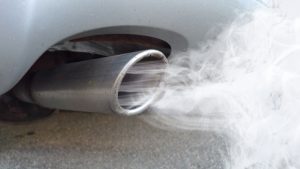European steel producers clamor for early adoption of carbon border tax
Brussels must feel a little like the Dutch boy with his finger in the dike when it comes to emissions.
No sooner do you create a solution to one problem – costing carbon dioxide emissions – than you create another – putting your domestic industries at a global disadvantage.
The Financial Times reported on calls by European industrial groups for the EU to introduce a carbon border tax. Rapidly rising prices for CO2 allowances raise the cost for the most-polluting industries far above any other region.
We’re offering timely emails with exclusive analyst commentary and some best practice advice. Sign up here.
EU’s Emissions Trading System aims to encourage reduction in emissions
According to the Financial Times, carbon prices in the EU’s flagship Emissions Trading System (ETS), a cornerstone of the bloc’s ambitious new target to slash emissions 55% by 2030, are within touching distance of €50 a metric ton. That’s more than double their pre-pandemic level.
The ETS is intended to encourage investment in technologies that reduce carbon emissions by placing a financial burden on producers who simply maintain their existing level of emissions. The EU grants allowances to polluters and allows them to trade them in order to allow a commercial price to develop – if you like letting the market decide what the balance is between paying to pollute and investing more to avoid the cost and pollute less.
The problem appears to be that anticipation among traders and commercial buyers is supplies will tighten as the available allowances will shrink over time.
The result? Rising prices for those allowances left, piling pressure on the most polluting firms.
Competition fears
Rises this year have prompted Tata Steel to place a €12 ($14.40) per metric ton surcharge on its European steel. The fear is further increases will make European producers increasingly less competitive against imports from countries with no such taxation system.
The post reports estimates made by steel producers that the EU carbon price is now costing them approximately $95 ($114) per metric ton of steel produced. (The production of one ton, on average, emits two tons of CO2 the post suggests.
That equates to almost 10% of the current steel price near €1,000 ($1,200) a metric ton.
Producers go on to suggest the estimated annual hit to the EU steel sector from having to buy carbon allowances from the market could hit €3 billion this year. Steel producers would have to pay to buy shortfalls in their allowances from the open market.
Pressure builds
The EU was due to unveil proposals for a carbon adjustment border tax in June. However, its implementation is not likely before 2023, at the earliest. Now, pressure is building to move up implementation to later this year.
The proposed border tax mechanism is initially set to target limited goods. Those include steel, cement, power generation and some chemicals. The mechanism will target goods imported from non-EU countries that do not have equivalent carbon pricing or emissions targets.
Ultimately, though, it could be extended to any carbon-intensive product. That includes other metals, like aluminum, zinc and ferro alloys (like FeMn and FeCr).
Distorted market
Letting the market decide the cost of polluting has merit. Price discovery in that way is likely to be more efficient than government-mandated prices.
However, the problem is the EU controls the provision of the allowances, making it a rigged market. It’s not an intentionally rigged market but one distorted by decisions made in Brussels on the size and allocation of allowances.
Steel suppliers selling into Europe and buyers from outside the bloc of components containing a significant steel content will therefore see the EU become less attractive in the run-up to the middle of the decade.
That is, unless or until similar carbon pricing policies are adopted elsewhere.
There is often a price to pay for being in the vanguard.
Volatility is the name of the game. Do you have a steel buying strategy that can handle the ups and downs?



Leave a Reply